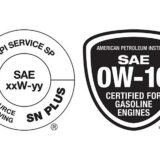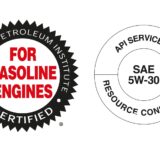API to survey consumers on PC-11 naming convention
The American Petroleum Institute (API) has contracted with a firm to conduct a market study on category naming of Proposed Category-11 (PC-11). The consumer market test options that will be given are: 1) API category CK-4 with no suffix after the viscosity grade and API category FA-4 with L suffix after the viscosity grade, and 2) API category CK-4 or FA-4 with no suffix after the viscosity grade.
During the meeting of the SAE Engine Oil Viscosity Classification (EOVC) task force on 24 June 2015 in Fort Lauderdale, Fla., U.S.A., Dan Arcy of the PC-11 New Category Development Team (NCDT) gave an update on the discussions that have taken place on the naming of this new heavy-duty engine oil category.
PC-11 consists of two sub-categories, PC-11A and PC-11B. PC-11A will be backward compatible for engines using the current category, API CJ-4, with HTHS viscosity above 3.5 cP.
PC-11B has lower viscosity for enhanced fuel economy, and will consist of oils with HTHS viscosity between 2.9-3.2 cP.
PC-11A will be known as API CK-4, and PC-11B will be known as API FA-4. In the past year, there have been discussions on how to differentiate between these two sub-categories so that consumers won’t be confused which oil to buy.
The naming task force within the NCDT took a poll in February 2015 and decided to test the following two options with consumers: The first would involve no change to the current system, with the API donut and either CK-4 (for PC-11A) or FA-4 (for PC-11B), with no change to the viscosity grade designation. The other option includes adding an “L” for low viscosity after the viscosity grade in the FA-4 sub-category. That would look, for example, like “API FA-4, SAE 10W-30 L.”
The naming decision matters to the EOVC because the task force is in charge of maintaining SAE J300, the global specification that defines the rheological limits for engine oils. If the NCDT decides that the sub-categories need to be defined by their performance categories alone, then no change to J300 will be needed. But using the “L” suffix would require that the new name be defined within J300.
As Arcy explained, the time window for making such a revision would be short. If the suffix is the preferred option, then the EOVC may need to meet between its usual bi-annual meetings. Before the December 2016 first license date, the API has requested a one-year waiting period so that oil companies can prepare to market the new category. Therefore, any change to J300 would need to be executed by December 2015.
API’s Kevin Ferrick said the consumer survey will start within the next few weeks.














